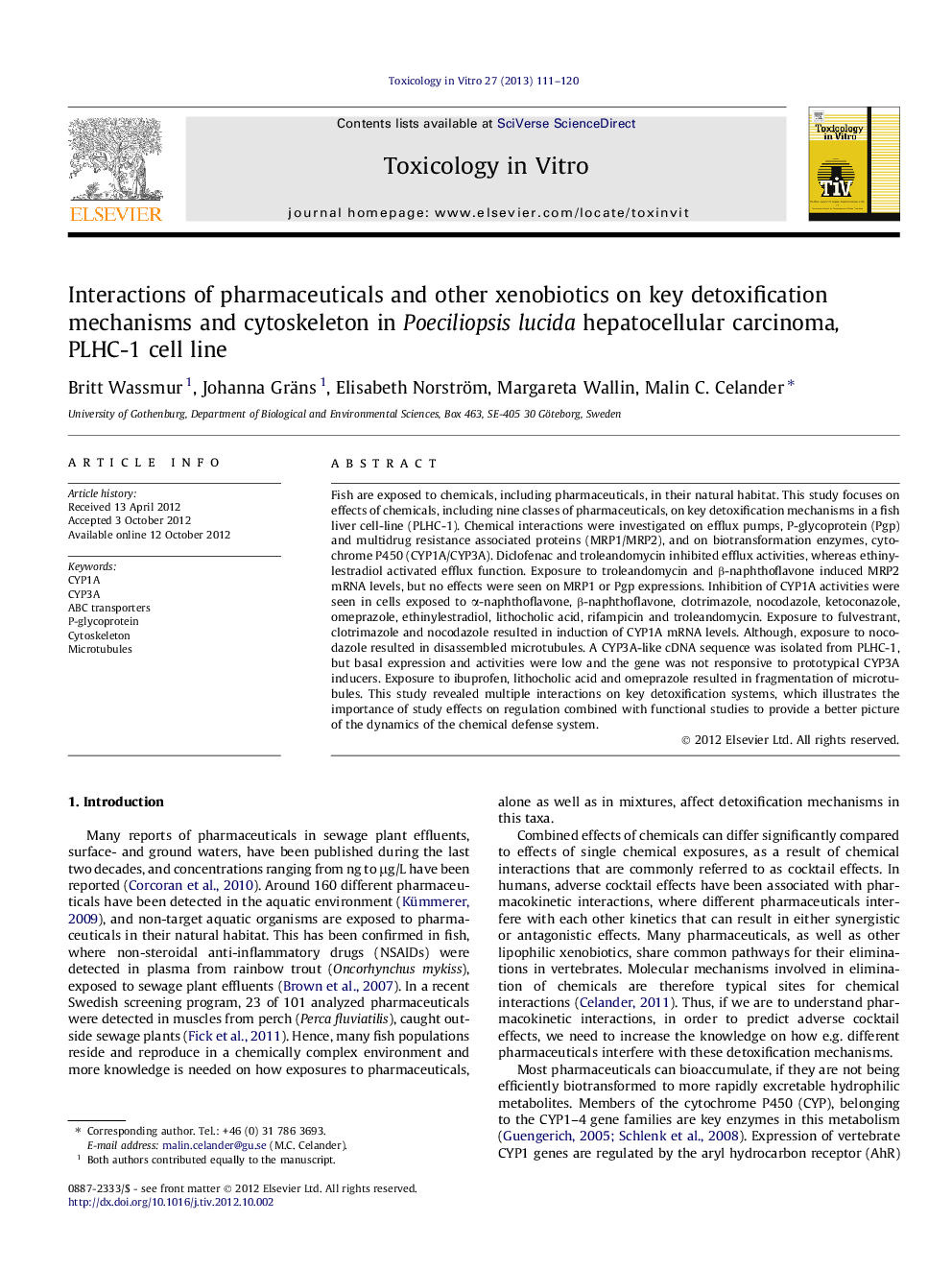| کد مقاله | کد نشریه | سال انتشار | مقاله انگلیسی | نسخه تمام متن |
|---|---|---|---|---|
| 5862806 | 1133784 | 2013 | 10 صفحه PDF | دانلود رایگان |

Fish are exposed to chemicals, including pharmaceuticals, in their natural habitat. This study focuses on effects of chemicals, including nine classes of pharmaceuticals, on key detoxification mechanisms in a fish liver cell-line (PLHC-1). Chemical interactions were investigated on efflux pumps, P-glycoprotein (Pgp) and multidrug resistance associated proteins (MRP1/MRP2), and on biotransformation enzymes, cytochrome P450 (CYP1A/CYP3A). Diclofenac and troleandomycin inhibited efflux activities, whereas ethinylestradiol activated efflux function. Exposure to troleandomycin and β-naphthoflavone induced MRP2 mRNA levels, but no effects were seen on MRP1 or Pgp expressions. Inhibition of CYP1A activities were seen in cells exposed to α-naphthoflavone, β-naphthoflavone, clotrimazole, nocodazole, ketoconazole, omeprazole, ethinylestradiol, lithocholic acid, rifampicin and troleandomycin. Exposure to fulvestrant, clotrimazole and nocodazole resulted in induction of CYP1A mRNA levels. Although, exposure to nocodazole resulted in disassembled microtubules. A CYP3A-like cDNA sequence was isolated from PLHC-1, but basal expression and activities were low and the gene was not responsive to prototypical CYP3A inducers. Exposure to ibuprofen, lithocholic acid and omeprazole resulted in fragmentation of microtubules. This study revealed multiple interactions on key detoxification systems, which illustrates the importance of study effects on regulation combined with functional studies to provide a better picture of the dynamics of the chemical defense system.
⺠Several pharmaceuticals affect efflux pumps and CYP1A enzymes in PLHC-1 cells. ⺠Nocodazole induces CYP1A in microtubule-disrupted PLHC-1 cells. ⺠Troleandomycin and β-naphthoflavone induce MRP2 mRNA levels in PLHC-1 cells. ⺠Pharmaceuticals cause fragmentations of microtubules in PLHC-1 cells.
Journal: Toxicology in Vitro - Volume 27, Issue 1, February 2013, Pages 111-120